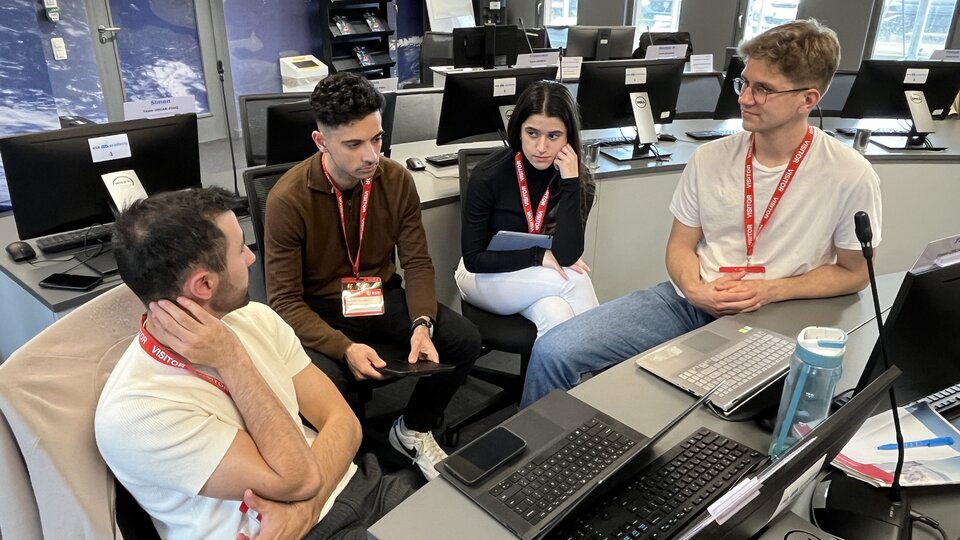Meet the team: COCO
The COCO experiment team is composed of 5 students from the University of Southampton. Their project, whose name stands for satellite COntrol based on COmpliant thrust vectoring mechanism, is a study of an innovative attitude and orbit control system (AOCS) for small satellites. The objective is to examine the overall performance, controllability, and firing time of the team's AOCS across different manoeuvres, and to assess its operation in a rendezvous mission. The experiment will take place in the frictionless environment of the Orbital Robotics Lab (ORL), at ESA ESTEC.

COCO is the collaborative effort of 5 students from the University of Southampton: Marcin Badowski, Elena Carulla Ruiz, Nesto Papageorgiou, Pedro Rodríguez López and Fabrizio Pisani. This project was developed as part of their final year master in Spacecraft Engineering, with the goal to enhance the capabilities of small satellites, making them more versatile and reliable.
They developed an AOCS for small satellites based on compliant thrust vectoring mechanisms. These are monolithic structures that attain a desired position through bending, resulting in a friction-free motion. Thanks to this innovative approach, the number of thrusters required to control a satellite is reduced from 8 or more to only 2, thereby cutting down on mass, volume, and overall costs. The COCO experiment aims to analyse the innovative system's performance, evaluating its feasibility and viability.

This AOCS design would be particularly beneficial for space missions such as debris removal and docking manoeuvres, which require rapid manoeuvrability. Examples of these will be tested during the testing campaign.
Testing will take place in the ORL, where the flattest floor in Europe can be found! Team COCO will attach their system to a platform that can be levitated by air bearings, creating an "air cushion" between the platform and the floor. This allows to simulate a 2D microgravity environment on Earth.
Do you think this is an interesting experiment?

Join the COCO project in testing the system by creating your own control algorithms! The COCO team created a digital simulation of their AOCS system in a microgravity environment and it is publicly accessible for anyone to use. The "AOCS Challenge", open to all students, defies you to develop the best algorithm to get to a certain position while optimising for fuel consumption. This challenge runs until the 4th of July, and the best 10 algorithms will be tested in the ORL at ESTEC during COCO’s campaign to get real life feedback! A special award is provided for the winner. The competition is sponsored by the University of Southampton Spaceflight society. To know more about it go to: aocs-challenge-leaderboard.onrender.com
Stay updated with progress and the campaign with COCO's social media accounts: @co.co.project (Instagram) and COCO Project (Linkedin).















 Germany
Germany
 Austria
Austria
 Belgium
Belgium
 Denmark
Denmark
 Spain
Spain
 Estonia
Estonia
 Finland
Finland
 France
France
 Greece
Greece
 Hungary
Hungary
 Ireland
Ireland
 Italy
Italy
 Luxembourg
Luxembourg
 Norway
Norway
 The Netherlands
The Netherlands
 Poland
Poland
 Portugal
Portugal
 Czechia
Czechia
 Romania
Romania
 United Kingdom
United Kingdom
 Slovenia
Slovenia
 Sweden
Sweden
 Switzerland
Switzerland



























